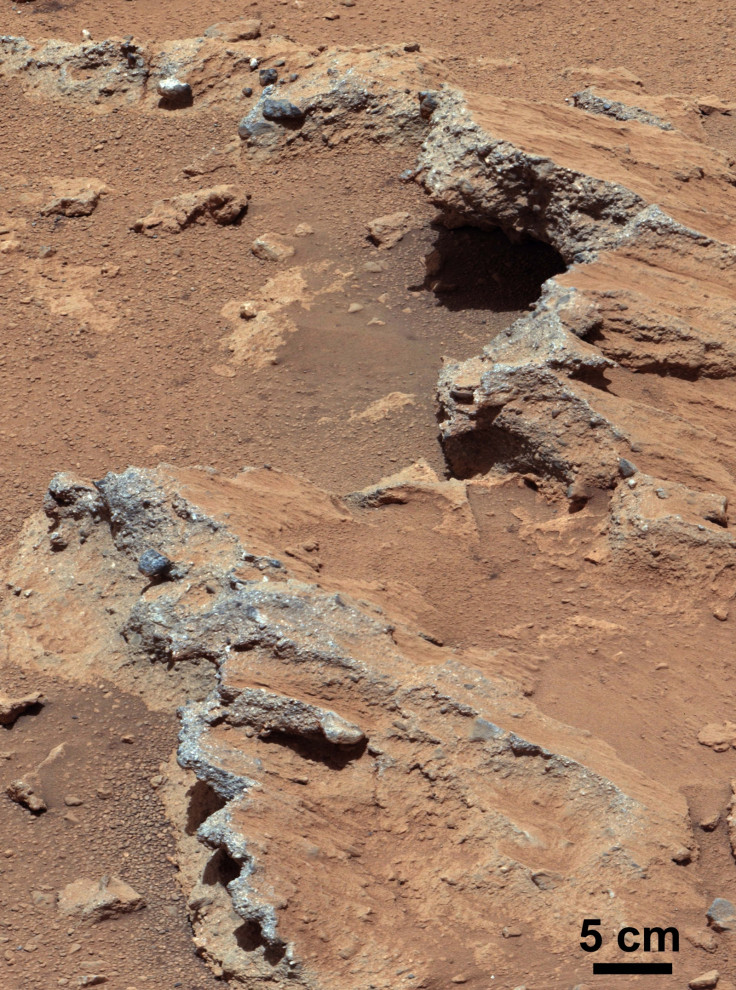Curiosity rover left Earth 5 years ago – here are its top 5 moments on Mars
Top finds include organic molecules, traces of an ancient thick atmosphere and the remains of a surface stream-bed.
The rocket carrying Curiosity blasted off on 26 November 2011. The rover survived the 253-day journey to Mars and landed successfully in the Gale crater on 6 August 2012.
Since that time it has been churning out discoveries about the Red Planet's past and present. Here are the top-five discoveries of its time on Mars so far.
5. The radiation on the journey is intense – Martian explorers will need to take special precautions
Before Curiosity even landed, the mission took valuable measurements. The rover received radiation levels greater than the lifetime limit for astronauts.
Additional precautions will be needed to protect any human space travellers from these dangerous levels of exposure in any future missions.
4. There are traces of an old, thick atmosphere that has since disappeared into space
The solar wind stripped away most of Mars' atmosphere but it was once thicker, Curiosity discovered.
Mars now has atmosphere mostly made up of carbon dioxide. About 3.8 billion years ago, the atmosphere may have been much thicker and had a comparable surface pressure to Earth.
"Our paper shows that transitioning from a moderately dense atmosphere to the current thin one is entirely possible," says Caltech postdoctoral fellow Renyu Hu, the lead author of the paper published in Nature Communications.
"It is exciting that what we know about the Martian atmosphere can now be pieced together into a consistent picture of its evolution – and this does not require a massive undetected carbon reservoir."

3. Liquid water flowed on Mars
Mars' atmosphere today has isotopes of hydrogen, carbon and argon that suggest that much of Mars' water was lost along with its atmosphere.
Curiosity also found the remains of an ancient stream bed on Mars in Gale crater.
"We completed more rigorous quantification of the outcrops to characterise the size distribution and roundness of the pebbles and sand that make up these conglomerates," said Rebecca Williams of the Planetary Science Institute, author of a paper on the stream bed published in Science.
"We ended up with a calculation in the same range as our initial estimate last fall. At a minimum, the stream was flowing at a speed equivalent to a walking pace – a meter, or three feet, per second – and it was ankle-deep to hip-deep."

2. There is methane in the atmosphere – and it's fluctuating a lot
Two years into Curiosity's mission, it found evidence of methane – an organic compound – in the Martian atmosphere. It also found there were plumes of methane at Gale crater released over monthly timescales.
The research was published in Science.
1. All the ingredients for organic life, as we know it, exist in the Martian soil
Curiosity found that Martian soil has all the basic chemical components for life: carbon, sulphur, nitrogen, oxygen and phosphorus.
Dust from the same spot in Yellowknife Bay on Mars also yielded organic molecules. These molecules don't indicate that there definitely is, or was, life on Mars, but it does show there were the right conditions for organic molecules to form at one point on the planet.
"This first confirmation of organic carbon in a rock on Mars holds much promise," said Curiosity Participating Scientist Roger Summons of the Massachusetts Institute of Technology in Cambridge, a co-author of a paper in Science published on the findings.
"Organics are important because they can tell us about the chemical pathways by which they were formed and preserved. In turn, this is informative about Earth-Mars differences and whether or not particular environments represented by Gale Crater sedimentary rocks were more or less favourable for accumulation of organic materials.
"The challenge now is to find other rocks on Mount Sharp that might have different and more extensive inventories of organic compounds."
© Copyright IBTimes 2025. All rights reserved.






















